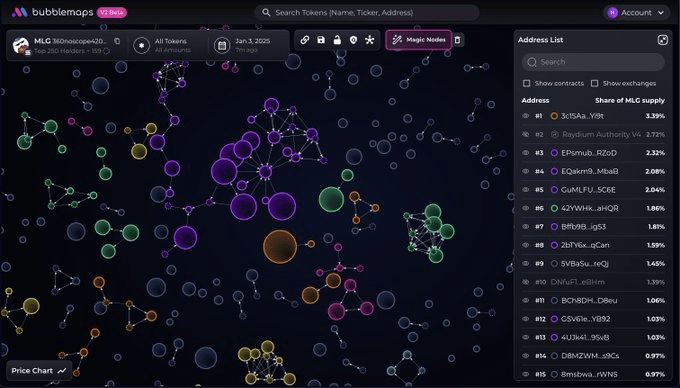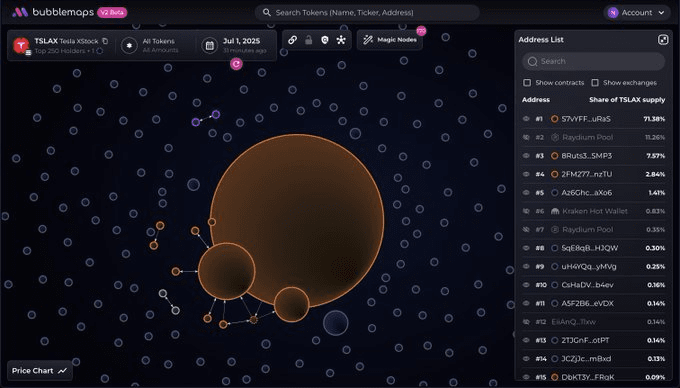In the Web3 world, when we evaluate a project, besides looking at its own technology and products, there is a very critical dimension that is often overlooked—its ecological niche.
Simply put, what role does it play in the entire industry? How many projects are willing to 'play' with it and integrate it into their products?
It's like building with Lego: if a project can only play by itself, its imagination space is limited. But if it becomes a 'universal plug' that can seamlessly connect with various blocks, its value will be exponentially amplified.
Today, let's re-evaluate Bubblemaps from this perspective.

A simple judgment criterion: Who is 'using' it?
Let's set aside what Bubblemaps claims about itself and directly look at who in the industry is actively embracing it. I spent some time sorting this out and found that its collaboration map has quietly grown very large, covering areas far beyond my imagination.
This is no longer just a simple 'tool' aimed at C-end users; it is becoming the 'infrastructure' in the eyes of B-end project parties.
We can simply categorize its 'circle of friends' into several categories:
1. Public Chains and L2: The Cornerstone of Trust
This is the highest level of collaboration. What does a public chain value most? The health and safety of its ecosystem.
Polygon, Arbitrum, Avalanche, Fantom, Base, Linea...
Almost all mainstream EVM chains and popular L2s you can think of have reached official or deep collaborations with Bubblemaps. This means that these top public chains recognize Bubblemaps' value in 'ecological governance' and 'data transparency'. They need a reliable tool to help themselves and users in the ecosystem clearly see token distribution, identify potential risks, and track on-chain dynamics. This is almost an official level of 'endorsement'.
2. Data and Analytics Platform: A strong partnership of 'Data Lego'
If collaboration with public chains is laying the foundation, then integration with top data platforms is a direct manifestation of value.
Etherscan & BscScan: This can be described as a 'king bomb' level collaboration. The browsers we use most often to check contracts and transactions now directly embed the 'View Bubble Map' button from Bubblemaps. This feature has transformed from a 'plugin' to one of the 'native functions' of the block explorer. This means that millions of core on-chain users can access its data visualization capabilities with one click every day.
DeFiLlama, DEX Screener, CoinGecko, Birdeye: These are our 'dashboards' for trading and research. They choose to integrate Bubblemaps because, beyond traditional data such as candlesticks, trading volume, and TVL, 'chip distribution' is becoming an increasingly important analysis dimension. They need Bubblemaps to complete their data puzzle and provide users with a more comprehensive decision-making basis.

3. DeFi Protocols and DEX: A 'Firewall' for Trading Safety
For DeFi projects that deal directly with user assets, security and transparency are lifelines.
PancakeSwap, Trader Joe, Pangolin...
Why do these leading decentralized exchanges (DEX) want to integrate Bubblemaps? Because they understand that if a token's chips are overly concentrated in the hands of a few people, the risks of extreme price fluctuations or even rug pulls are very high. Using Bubblemaps as a 'check tool' before trading helps users filter out a large number of high-risk 'meme coin' projects, which essentially optimizes user experience and retains users.
From 'breadth', what 'depth' do I see?
After sorting out this collaboration list, my biggest feeling is: Bubblemaps is transforming from an 'application' into a 'protocol'.
It is no longer just a website for users to query information. It is becoming a 'data visualization standard', a 'functional module' that any project needing to enhance data transparency can easily call upon.
This 'plugin' and 'modular' approach is a very clever strategy in the Web3 world. It has chosen not to compete with data platforms, DEX, and public chains, but to become an 'enhancement plugin' for all of them.
This leads us to a topic worth exploring in depth:
In the next bull market, what determines a project's ceiling may no longer be how big it can grow on its own, but how many other projects it can 'empower'. When a tool becomes the 'industry standard', its network effect and moat are at their deepest.
Just as Chainlink is to oracles and The Graph is to data indexing, Bubblemaps seems to be establishing a similar standard in the niche of 'token chip visualization'.
